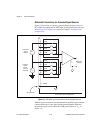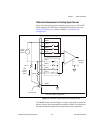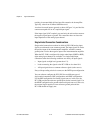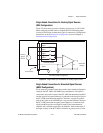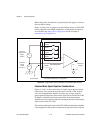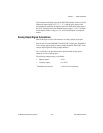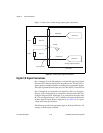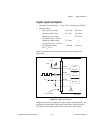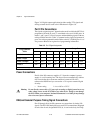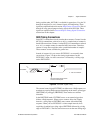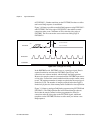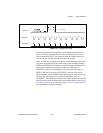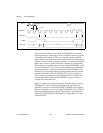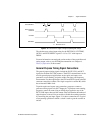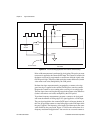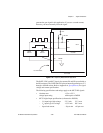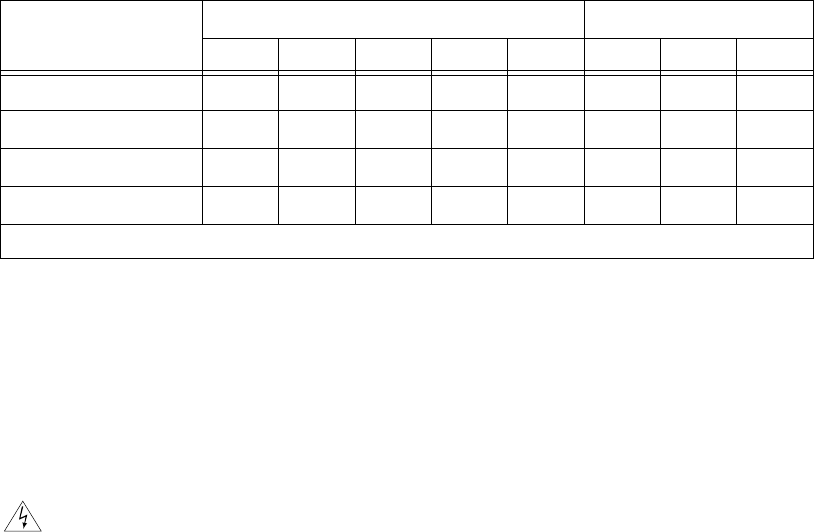
Chapter 3 Signal Connections
PCI-1200 User Manual 3-18 © National Instruments Corporation
Figure 3-8. Digital output applications include sending TTL signals and
driving external devices such as the LED shown in Figure 3-8.
Port C Pin Connections
The signals assigned to port C depend on the mode in which the 82C55A is
programmed. In mode 0, port C is considered to be two 4-bit I/O ports. In
modes 1 and 2, port C is used for status and handshaking signals with two
or three I/O bits mixed in. Table 3-5 summarizes the signal assignments of
port C for each programmable mode. Refer to the PCI-1200 Register-Level
Programmer Manual for register-level programming information.
Power Connections
Pin 49 of the I/O connector supplies +5 V from the computer’s power
supply via a self-resetting fuse. The fuse will reset automatically within a
few seconds after the overcurrent condition is removed. Pin 49 is
referenced to DGND and you can use the +5 V to power external digital
circuitry.
• Power rating 1 A at +4.65 to +5.25 V
Warning
Do not directly connect this +5 V power pin to analog or digital ground or to any
other voltage source on the PCI-1200 or any other device. Doing so can damage
the PCI-1200 or your computer. National Instruments is
NOT
liable for any damage
due to incorrect power connections.
DAQ and General Purpose Timing Signal Connections
Pins 38 through 48 of the I/O connector are connections for timing I/O
signals. The PCI-1200 timing I/O uses two 82C53 counter/timer integrated
circuits. One circuit, designated 82C53(A), is used exclusively for DAQ
Table 3-5.
Port C Signal Assignments
Programmable
Mode
Group A Group B
PC7 PC6 PC5 PC4 PC3 PC2 PC1 PC0
Mode 0
I/O I/O I/O I/O I/O I/O I/O I/O
Mode 1 Input
I/O I/O IBF
A
STB
A
* INTR
A
STB
B
* IBFB
B
INTR
B
Mode 1 Output
OBF
A
* ACK
A
* I/O I/O INTR
A
ACK
B
* OBF
B
* INTR
B
Mode 2
OBF
A
* ACK
A
* IBF
A
STB
A
* INTR
A
I/O I/O I/O
* Indicates that the signal is active low.



